Abstract
Abdominal wound dehiscence was quantitatively studied in a rat model. Polybutester suture is a new monofilament nonabsorbable suture that has unique stress-strain properties that are potentially beneficial for abdominal wound closure. The abdominal volume at the moment of wound dehiscence was correlated with the extensibility of the suture material used for closure. Interrupted sutures of polybutester cut through the tissues at a mean abdominal volume of 212 +/- 3 ml. This volume was significantly (p less than or equal to 0.005) greater than the mean volumes reached with nylon (197 +/- 3 ml) or polyglycolic acid (187 +/- 4 ml). Closure of abdomens with continuous polybutester suture resulted in a mean rupture volume of 218 +/- 3 ml, which was significantly (p less than or equal to 0.005) greater than that achieved with the same suture employed as simple interrupted sutures (212 +/- 4 ml). The influence of width of tissue bite, suture size, and needle configuration was also evaluated.
Full text
PDF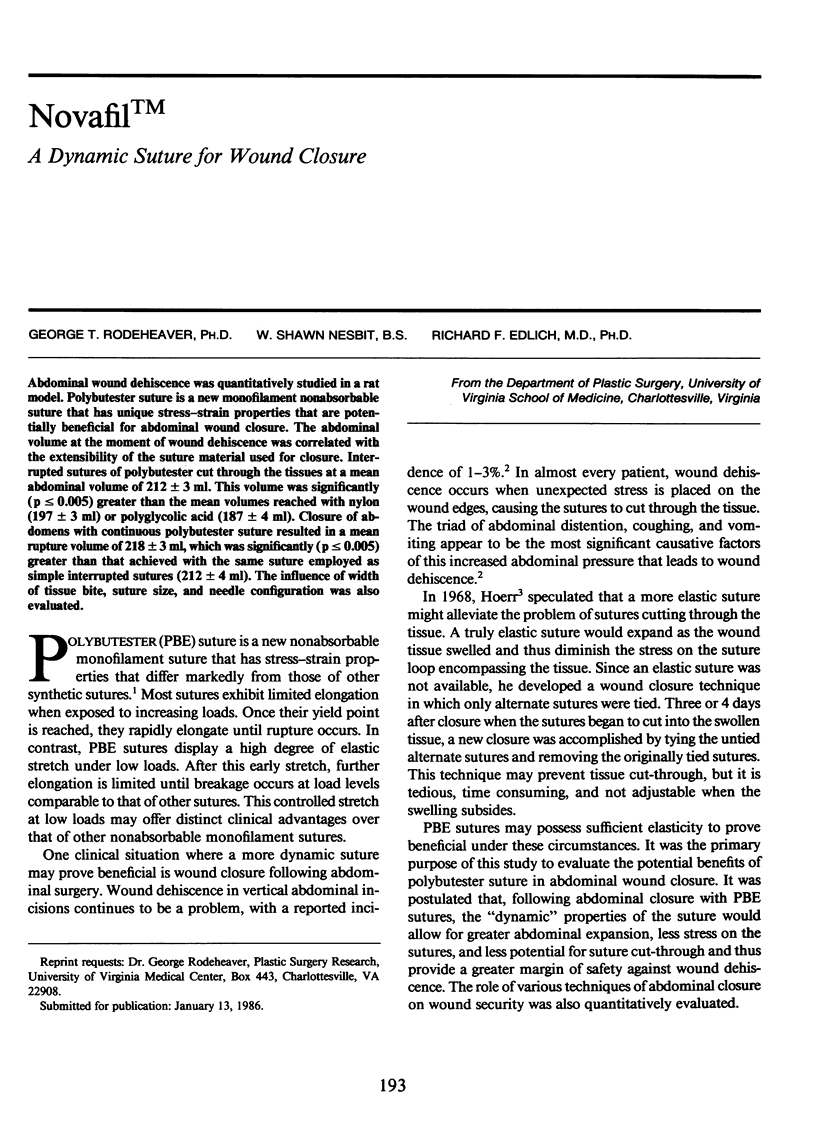
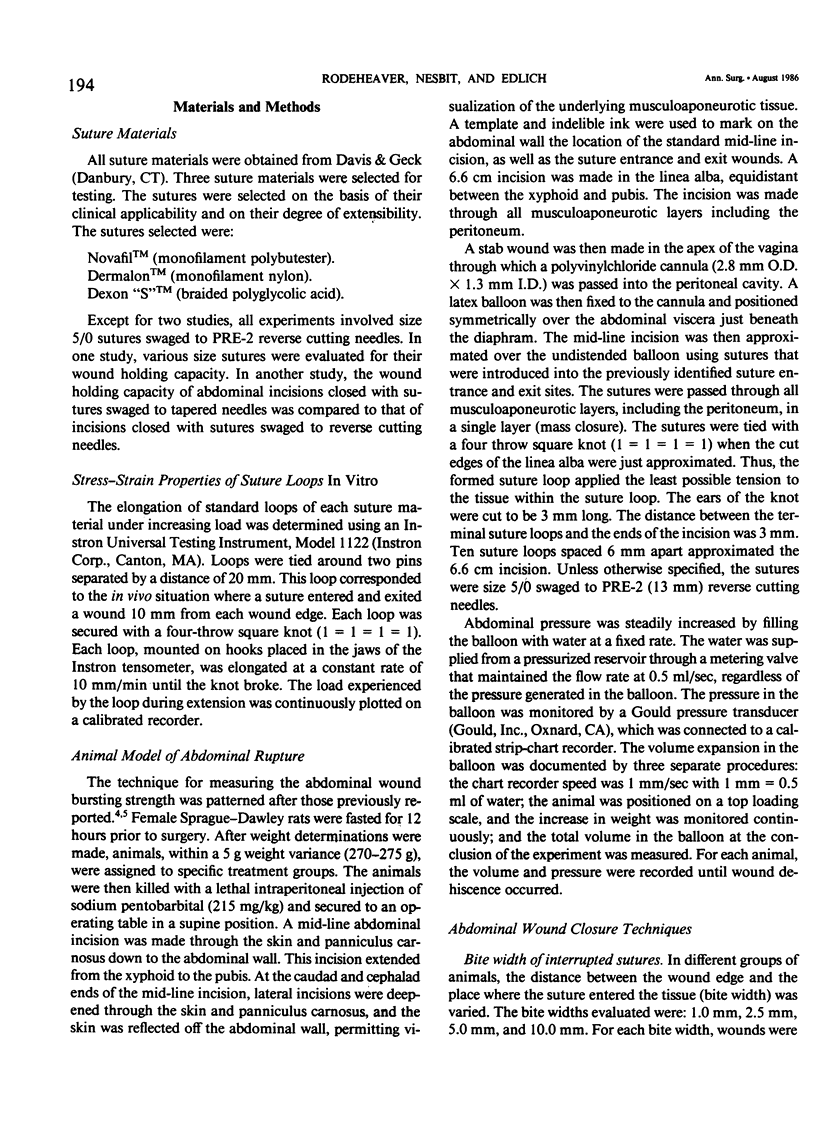
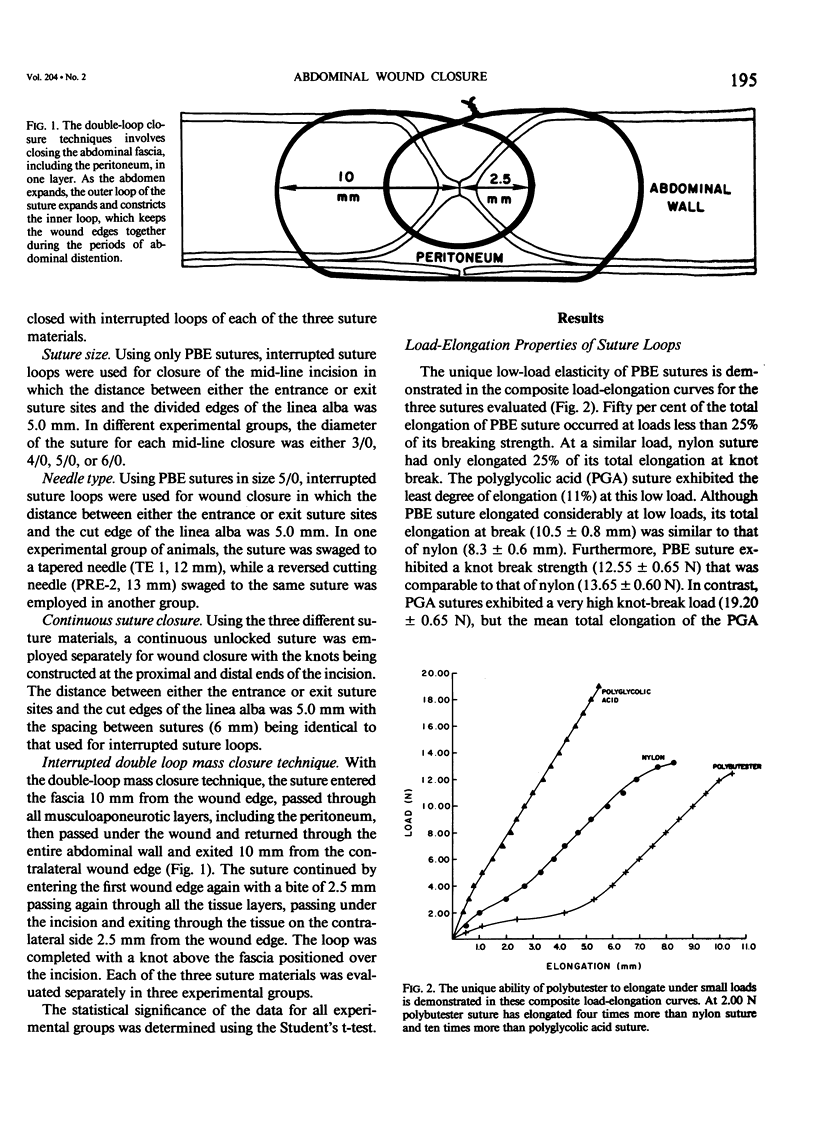
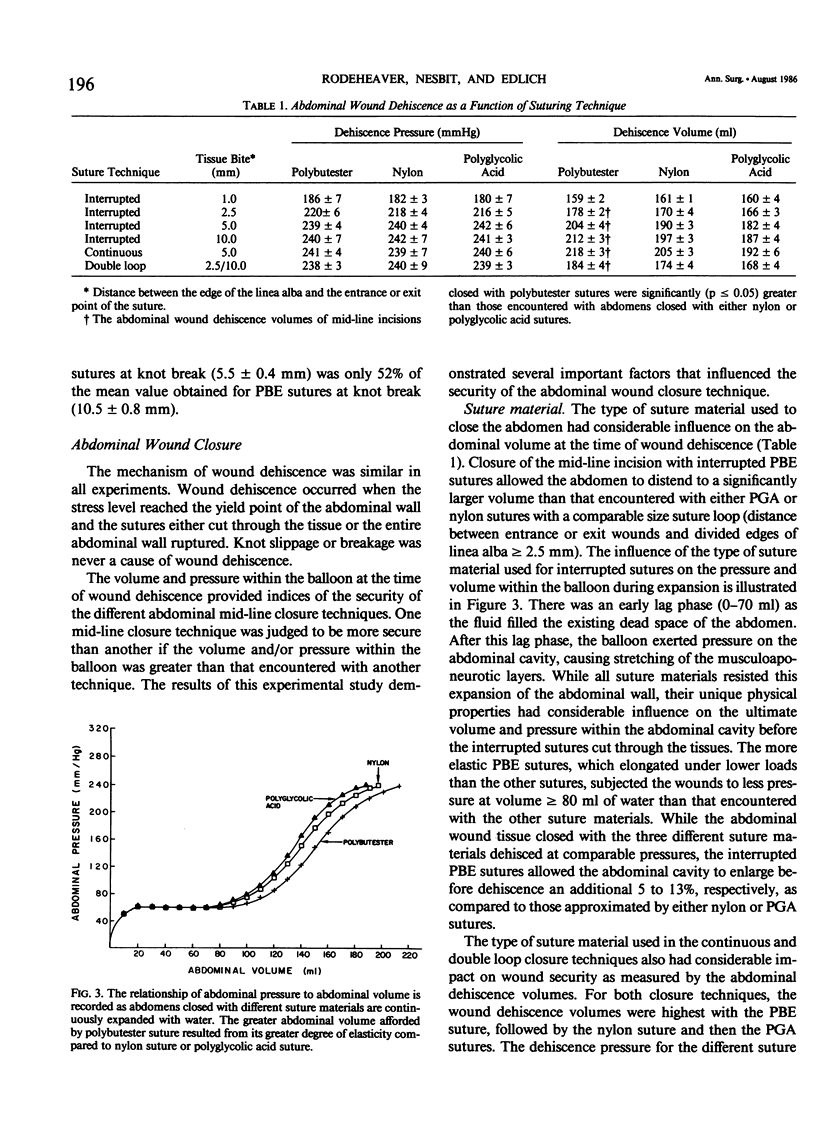
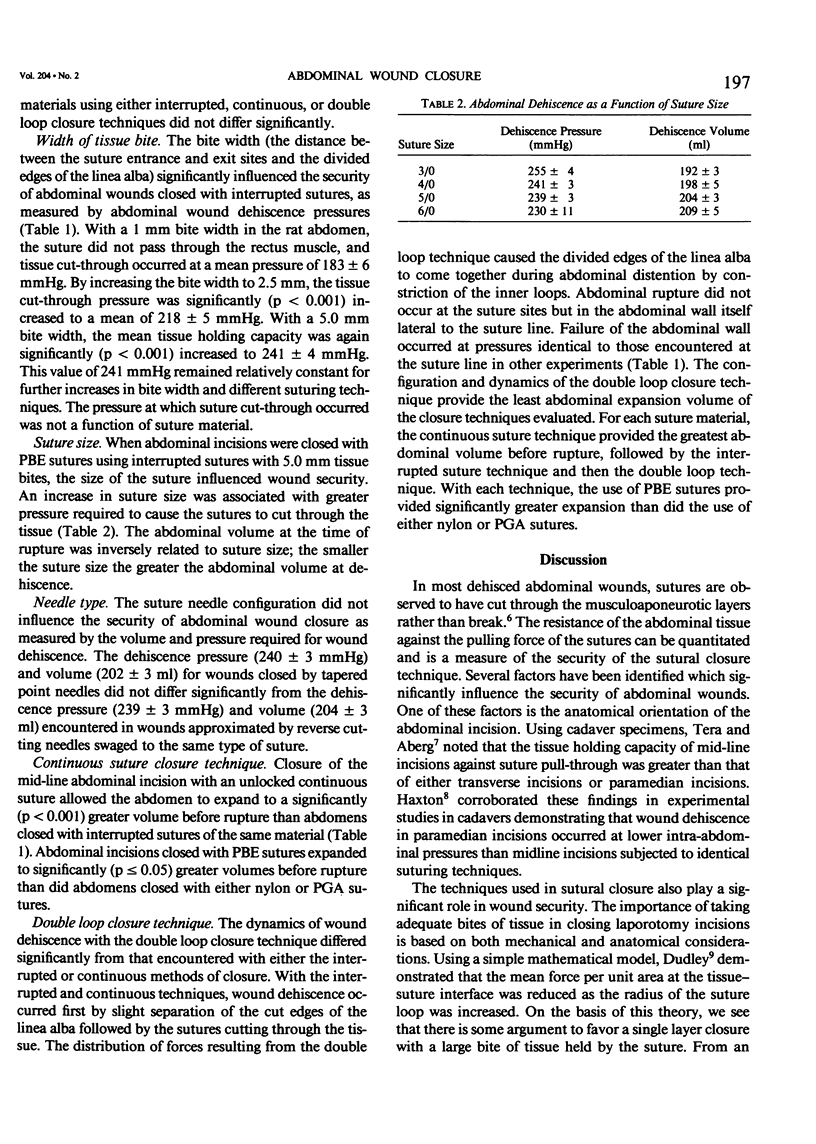
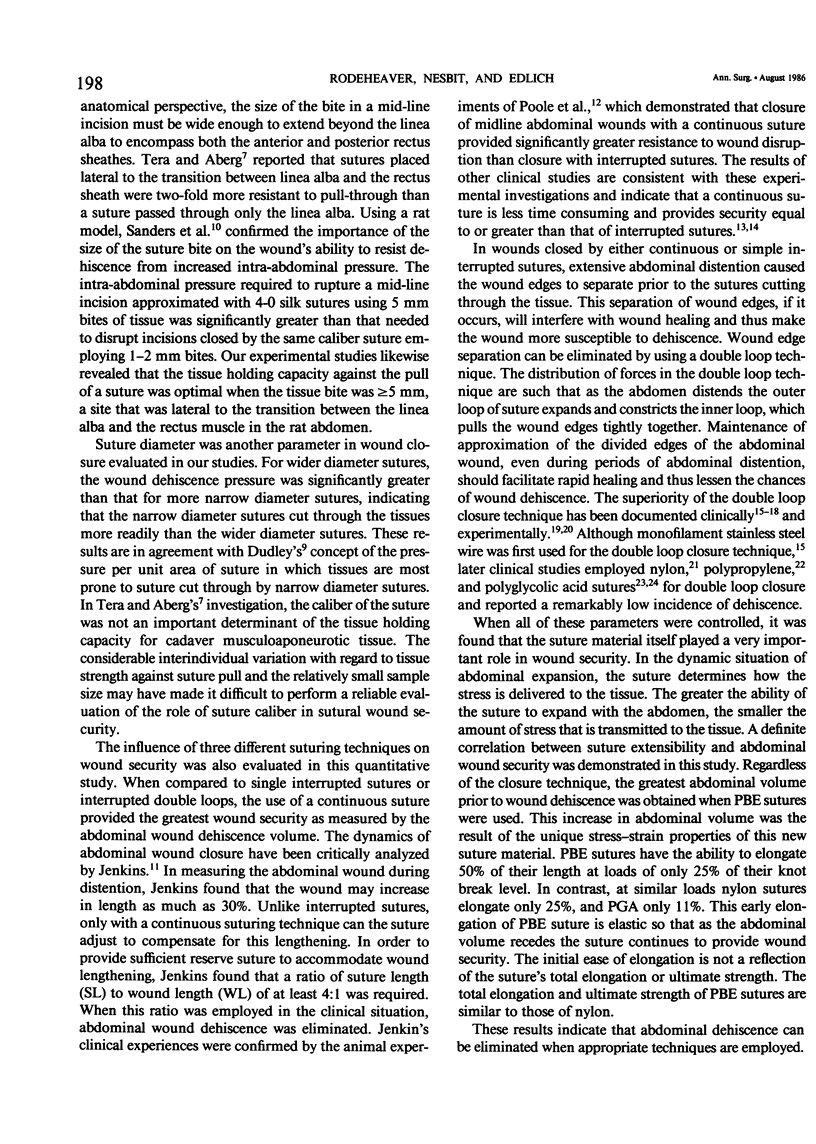
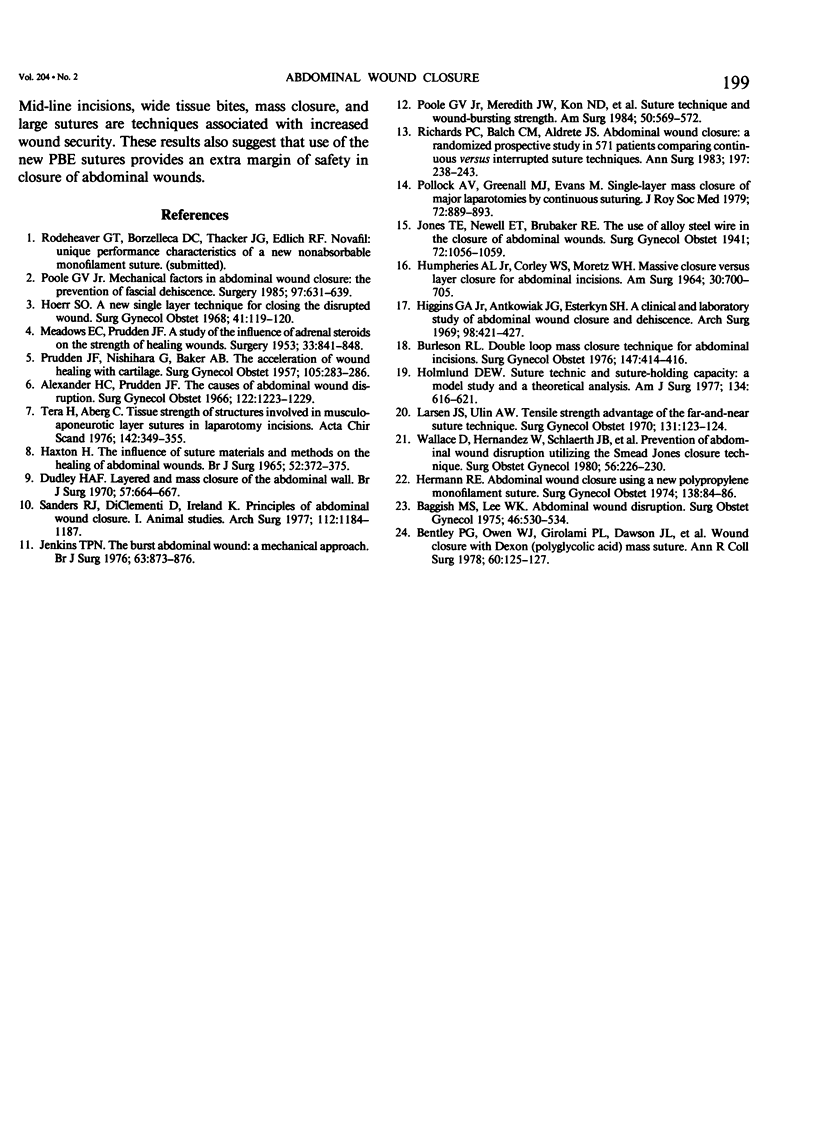
Selected References
These references are in PubMed. This may not be the complete list of references from this article.
- Alexander H. C., Prudden J. F. The causes of abdominal wound disruption. Surg Gynecol Obstet. 1966 Jun;122(6):1223–1229. [PubMed] [Google Scholar]
- Baggish M. S., Lee W. K. Abdominal wound disruption. Obstet Gynecol. 1975 Nov;46(5):530–534. [PubMed] [Google Scholar]
- Bentley P. G., Owen W. J., Girolami P. L., Dawson J. L. Wound closure with Dexon (polyglycolic acid) mass suture. Ann R Coll Surg Engl. 1978 Mar;60(2):125–127. [PMC free article] [PubMed] [Google Scholar]
- Burleson R. L. Double loop mass closure technique for abdominal incisions. Surg Gynecol Obstet. 1978 Sep;147(3):414–416. [PubMed] [Google Scholar]
- Dudley H. A. Layered and mass closure of the abdominal wall. A theoretical and experimental analysis. Br J Surg. 1970 Sep;57(9):664–667. doi: 10.1002/bjs.1800570908. [DOI] [PubMed] [Google Scholar]
- HAXTON H. THE INFLUENCE OF SUTURE MATERIALS AND METHODS ON THE HEALING OF ABDOMINAL WOUNDS. Br J Surg. 1965 May;52:372–375. doi: 10.1002/bjs.1800520515. [DOI] [PubMed] [Google Scholar]
- HUMPHRIES A. L., Jr, CORLEY W. S., MORETZ W. H. MASSIVE CLOSURE VERSUS LAYER CLOSURE FOR ABDOMINAL INCISIONS. Am Surg. 1964 Nov;30:700–705. [PubMed] [Google Scholar]
- Hermann R. E. Abdominal wound closure using a new polypropylene monofilament suture. Surg Gynecol Obstet. 1974 Jan;138(1):84–86. [PubMed] [Google Scholar]
- Higgins G. A., Jr, Antkowiak J. G., Esterkyn S. H. A clinical and laboratory study of abdominal wound closure and dehiscence. Arch Surg. 1969 Apr;98(4):421–427. doi: 10.1001/archsurg.1969.01340100053005. [DOI] [PubMed] [Google Scholar]
- Hoerr S. O. A new single layer technique for closing the disrupted wound. Surg Gynecol Obstet. 1968 Jan;126(1):119–120. [PubMed] [Google Scholar]
- Holmlund D. E. Suture technic and suture-holding capacity. A model study and a theoretical analysis. Am J Surg. 1977 Nov;134(5):616–621. doi: 10.1016/0002-9610(77)90448-2. [DOI] [PubMed] [Google Scholar]
- Jenkins T. P. The burst abdominal wound: a mechanical approach. Br J Surg. 1976 Nov;63(11):873–876. doi: 10.1002/bjs.1800631110. [DOI] [PubMed] [Google Scholar]
- Larsen J. S., Ulin A. W. Tensile strength advantage of the far-and-near suture technique. Surg Gynecol Obstet. 1970 Jul;131(1):123–124. [PubMed] [Google Scholar]
- MEADOWS E. C., PRUDDEN J. F. A study of the influence of adrenal steroids on the strength of healing wounds; preliminary report. Surgery. 1953 Jun;33(6):841–848. [PubMed] [Google Scholar]
- PRUDDEN J. F., NISHIHARA G., BAKER L. The acceleration of wound healing with cartilage. I. Surg Gynecol Obstet. 1957 Sep;105(3):283–286. [PubMed] [Google Scholar]
- Pollock A. V., Greenall M. J., Evans M. Single-layer mass closure of major laparotomies by continuous suturing. J R Soc Med. 1979 Dec;72(12):889–893. doi: 10.1177/014107687907201205. [DOI] [PMC free article] [PubMed] [Google Scholar]
- Poole G. V., Jr Mechanical factors in abdominal wound closure: the prevention of fascial dehiscence. Surgery. 1985 Jun;97(6):631–640. [PubMed] [Google Scholar]
- Poole G. V., Jr, Meredith J. W., Kon N. D., Martin M. B., Kawamoto E. H., Myers R. T. Suture technique and wound-bursting strength. Am Surg. 1984 Oct;50(10):569–572. [PubMed] [Google Scholar]
- Richards P. C., Balch C. M., Aldrete J. S. Abdominal wound closure. A randomized prospective study of 571 patients comparing continuous vs. interrupted suture techniques. Ann Surg. 1983 Feb;197(2):238–243. doi: 10.1097/00000658-198302000-00018. [DOI] [PMC free article] [PubMed] [Google Scholar]
- Sanders R. J., DiClementi D., Ireland K. Principles of abdominal wound closure. I. Animal studies. Arch Surg. 1977 Oct;112(10):1184–1187. doi: 10.1001/archsurg.1977.01370100038007. [DOI] [PubMed] [Google Scholar]
- Tera H., Aberg C. Tissue strength of structures involved in musculo-aponeurotic layer sutures in laparotomy incisions. Acta Chir Scand. 1976;142(5):349–355. [PubMed] [Google Scholar]
- Wallace D., Hernandez W., Schlaerth J. B., Nalick R. N., Morrow C. P. Prevention of abdominal wound disruption utilizing the Smead-Jones closure technique. Obstet Gynecol. 1980 Aug;56(2):226–230. [PubMed] [Google Scholar]


